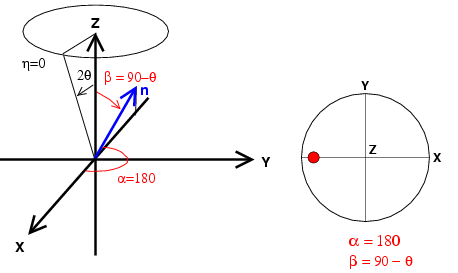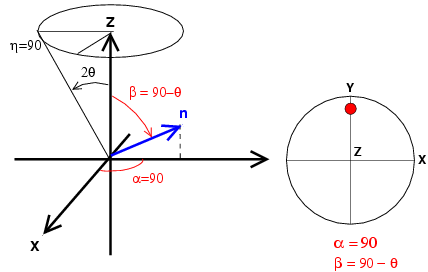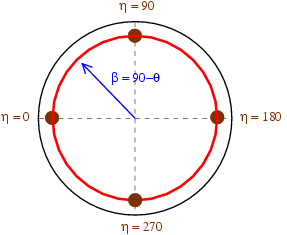|
Texture
In works Memo |
Maud /
Data Coverage In Axial Diffraction Experiments< Using pole figures to represent directions in space | Radial Diffraction | Data Coverage In Radial Diffraction Experiments > If you perform an axial diffraction experiment, your incoming x-ray beam is parallel to the compression direction. In the figure below, we show the location of the data measured at eta=0 and eta=90 on the pole figure of the compression direction. Eta is the azimuth angle on the image plate. I personaly call it delta in my publications, but MAUD calls it eta...
Overall, on a pole figure of the compression direction, one diffraction ring will provide you with the following coverage
|
Page last modified on March 20, 2008, at 05:08 PM


